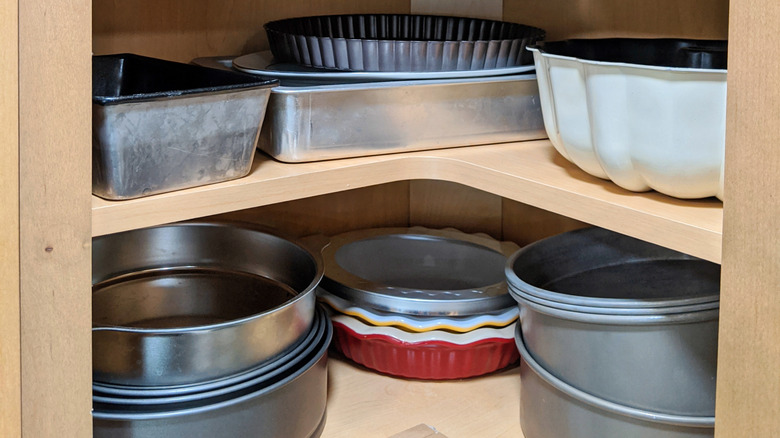The Biggest Mistake People Make When Doubling A Recipe
Whether you're making dinner for a crowd or want a stash of cookies to keep in the freezer, you may find yourself needing to double a recipe. The process might seem pretty straightforward because multiplying by two isn't too difficult, even for those of us who weren't mathletes. Still, it's a mistake to assume that this simple equation holds for all ingredients. For one thing, salt and spices might be too intense in a double dose, so it's best to start by using just 1.5 times the original amount.
Yet another issue that affects baked goods is that double the amount of leavening might also be a bit much. For that reason, some cooks suggest reducing the amount of baking soda and baking powder by ⅛ teaspoon. Others recommend you recheck the ratio; as a general rule of thumb, a baking recipe should have between 1 and 1 ¼ teaspoons of baking powder or ¼ teaspoon of baking soda for each cup of flour. This means that if you're making a double batch of our giant Levain-style M&M's cookies, you can go ahead and double the amount of baking powder, but you might want to leave the baking soda as is.
Not every part of a recipe needs to be doubled, either. This is particularly true in the case of condiments. If you're cooking our karaage fried chicken or chimi burgers, you might realize that you won't need a double portion of sauce for two batches. In this case, go ahead and increase the amounts for the other ingredients, but prepare the sauce according to the original instructions.
Recipe doubling makes it difficult to choose a pan
Choosing the right pan size is also important when doubling a recipe, since the wrong one can lead to baked goods being too dense, too dry, or raw in the middle. It's not always easy to pick your pan, though. Once upon a time, I was making a double batch of some dessert recipe and didn't know how big a pan to use, so my dad gave me a complicated geometry lesson demonstrating that there's more to pan sizing than simply doubling the inch measurements of the dimensions.
Now, however, I just Google the pan volume and look for a different vessel that holds twice the amount. I could also measure the volume of pans by pouring in cups of water, but I'm lazy, and the internet has largely spared me the effort. As it turns out, a 6-inch round pan can hold 4 cups of batter, while 8 cups can fit into a 9-inch one. Square pans are equally mysterious for those of us who are geometry challenged, since an 8-inch one can hold 6 cups, while a 10-inch one holds 12 cups — go figure.
Pan size may also be relevant if you're not baking. If you're making shakshuka in a cast iron skillet, you'll be able to fit three eggs into an 8-inch pan, while a 13-inch one will hold six. The moral of the story is this: Determining pan volume is more complicated than multiplying by two, but you still need to take it into account.

